The Economics and Statistics Division maintains archives of previous publications for accountability purposes, but makes no updates to keep these documents current with the latest data revisions from Statistics Canada. As a result, information in older documents may not be accurate. Please exercise caution when referring to older documents. For the latest information and historical data, please contact the individual listed to the right.
<--- Return to Archive
For additional information relating to this article, please contact:
September 30, 2019NOVA SCOTIA ANNUAL POPULATION ESTIMATES AS OF JULY 1, 2019 As of July 1, 2019, Nova Scotia's population is estimated to be 971,395, an increase of 11,895 (1.24%) over the July 1, 2018 estimate (959,500). Population estimates for July 1 and components of population change in the 12 months up to July 1 are conventionally referred to as 'annual' population estimates.
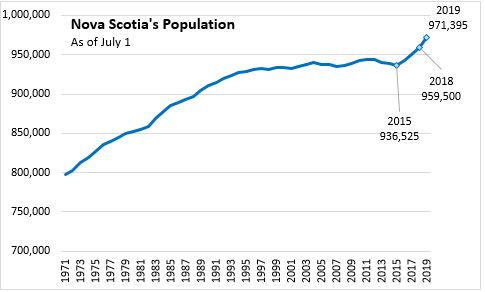
National population growth was 1.43 per cent from July 1, 2018 to July 1, 2019. The fastest growth was observed in Prince Edward Island while Newfoundland and Labrador was the only province with declining population.

Last year's population increase of 11,895 was the largest population growth (July 1 to July 1) since 1971. In percentage terms, Nova Scotia's growth of 1.24 per cent was the fastest observed since 1973.
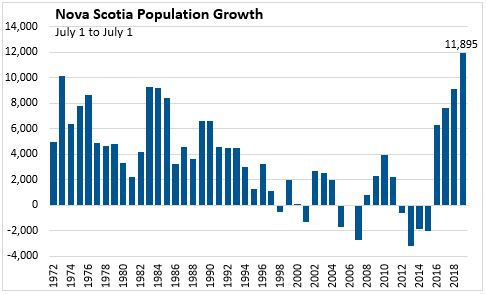
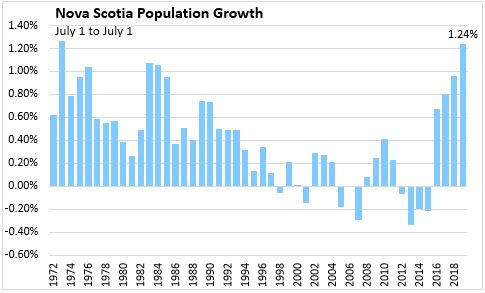
Natural population change (births less deaths) put continued downward pressure on Nova Scotia's population. From July 1, 2018 to July 1, 2019 there were 8,472 births and 9,956 deaths, resulting in a net natural population change of -1,484 over this period.
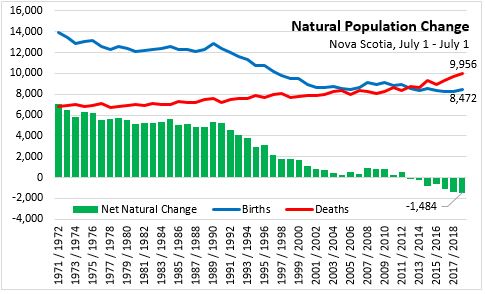
The last year was the strongest annual period for immigration on record since comparable records started after the second world war. A total of 6,393 immigrants added to Nova Scotia's population. The latest quarter (April 1, 2019 to July 1, 2019) recorded the largest quarterly number of immigrants to Nova Scotia.
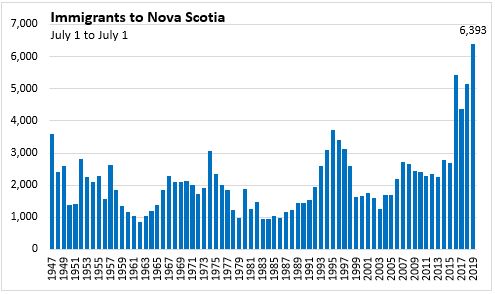
In addition to 6,393 immigrants, net changes in non-permanent residents added a further 4,121 to Nova Scotia's population from July 1, 2018 to July 1, 2019. Immigration and net non-permanent residents added far more to the population than estimated net emigration of -441. Overall net international population change contributed 10,073 to Nova Scotia's population over the last year.
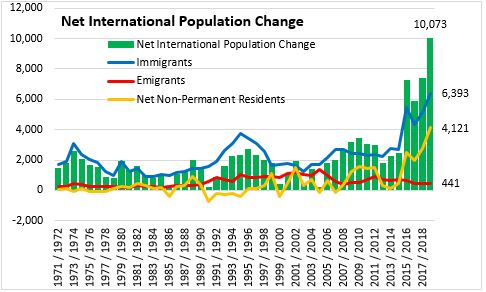
The period from July 1, 2018 to July 1, 2019 marked the fourth consecutive year of net interprovincial migration to Nova Scotia. There haven't been four consecutive years of net interprovincial migration since the early 1970s. The number of in-migrants to Nova Scotia from other provinces rose to 17,324 while the number of out-migrants from Nova Scotia was 14,018 (also up compared with the last two years). Net interprovincial migration added 3,306 to the population over the period from July 1, 2018 to July 1, 2019.
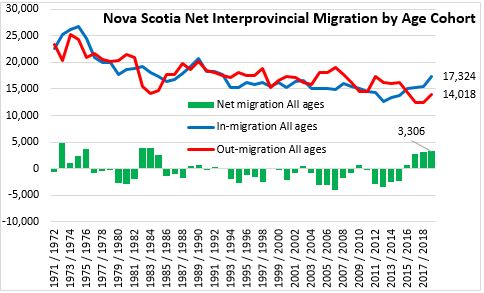
There was net positive interprovincial migration for almost all age cohorts. Net interprovincial migration of children (aged 0-14) contributed 544 to Nova Scotia's population from July 1, 2018 to July 1, 2019. Youth interprovincial migration (ages 15-34) was positive at +703 over this period. Youth are notably more mobile than other age cohorts. Net migration of those aged 35-49 was also positive at +541 while there was continuted increase in net migration of those aged 50-64 (+1,012) and those aged 65+ (+506).
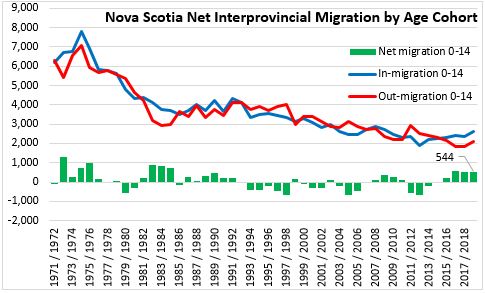
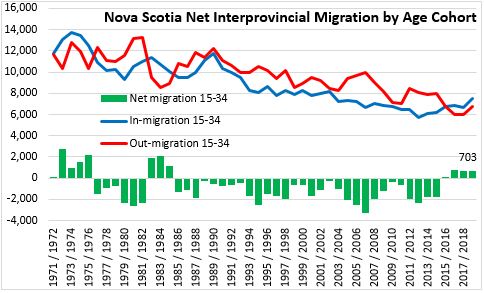
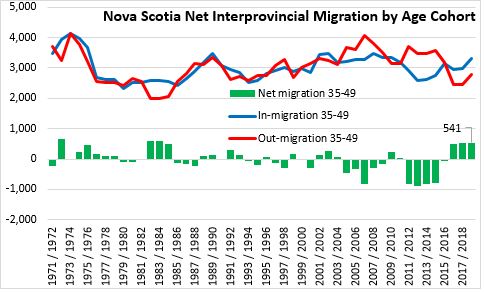
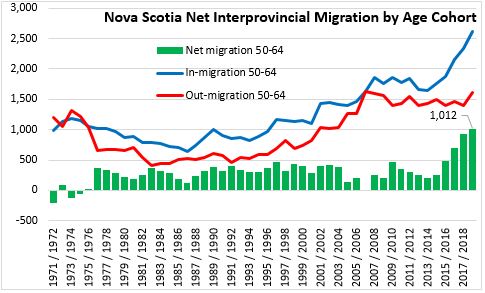
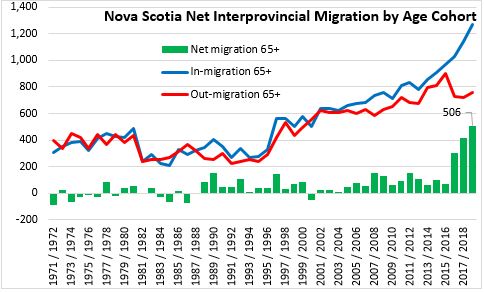
By source and destination, Nova Scotia's net interprovincial migration had positive contributions from all provinces except Quebec and Alberta. The largest sources of net interprovincial migration to Nova Scotia were Ontario, British Columbia and Newfoundland and Labrador. Net migration between Nova Scotia and Alberta has flattened after three years of net positive migration.
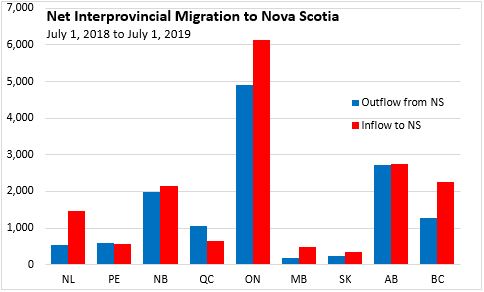

*A previous version of this chart was calculated incorrectly and has been updated.
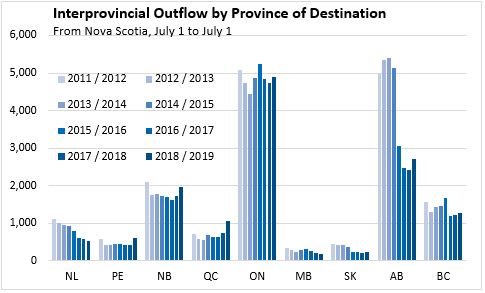

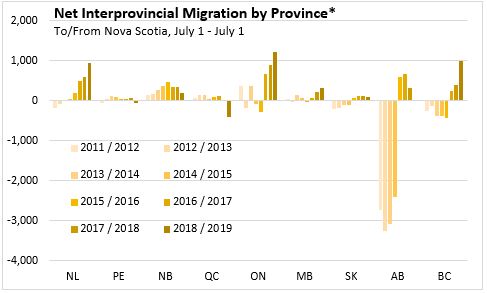
*A previous version of this chart was calculated incorrectly and has been updated.
In summary, Nova Scotia's population grew last year as births, immigrants, net interprovincial migrants and net non-permanent residents outpaced declines from deaths and emigration.
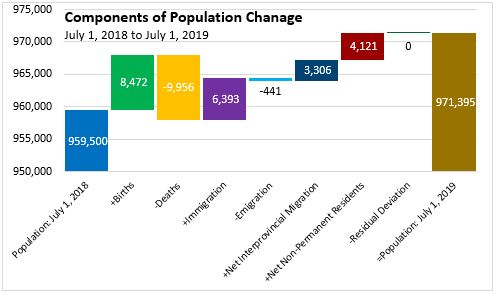
Nova Scotia's median age was 44.9 years. After years of strong immigration and net interprovincial migration, Nova Scotia's median age declined from July 1, 2018 (median age: 45.1 years) to July 1, 2019. There hasn't been a decline in Nova Scotia's median age since 1964. Nova Scotia is not unique in its declining median age; Ontario and Prince Edward Island also reported lower median age as of July 1, 2019.

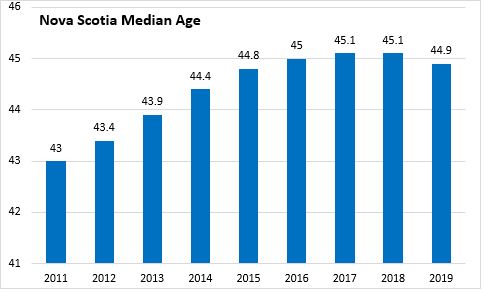
Immigration and net interprovincial migration have contributed to a reversal in declining populations of Nova Scotia's younger cohorts, particularly for those aged 18-39.
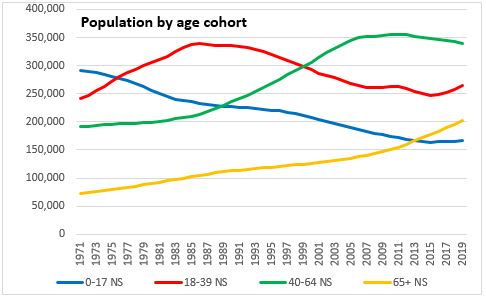
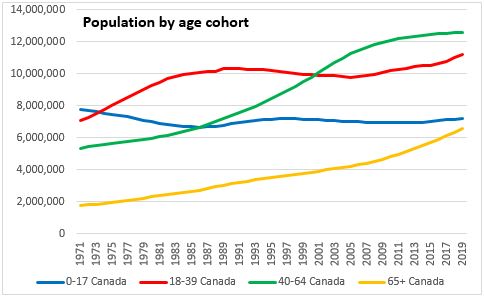
Source:
Statistics Canada. Table 17-10-0005-01 Population estimates on July 1st, by age and sex, Table 17-10-0008-01 Estimates of the components of demographic growth, annual, Table 17-10-0014-01 Estimates of the components of international migration, by age and sex, annual, Table 17-10-0015-01 Estimates of the components of interprovincial migration, by age and sex, annual, Table 17-10-0022-01 Estimates of interprovincial migrants by province or territory of origin and destination, annual, Table 17-10-0009-01 Population estimates, quarterly, Table 17-10-0040-01 Estimates of the components of international migration, quarterly, Table 17-10-0020-01 Estimates of the components of interprovincial migration, quarterly
<--- Return to Archive